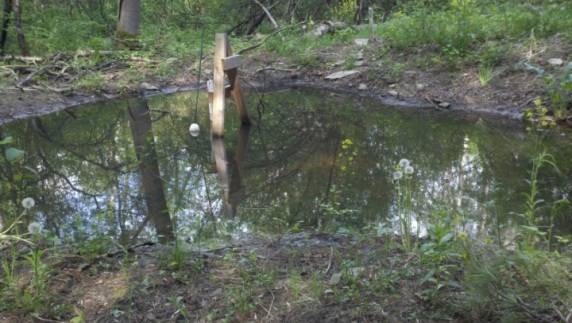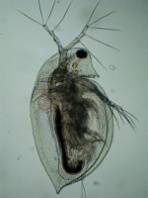 Biodiversity has become a highly popularized term in recent media outlets with talk of global climate change and loss of habitat for life on earth. Biodiversity can simply be defined as the variety of life on earth. Compare a coral reef ecosystem to a temperate forest, tropical rainforest, Great Lake, or even a grassland prairie in the Midwestern United States. What makes these ecosystems and the life they contain so different from one another? When we consider the different places, it is easy to see the variety in organism shape, size, function, and color that exists among them.
Biodiversity has become a highly popularized term in recent media outlets with talk of global climate change and loss of habitat for life on earth. Biodiversity can simply be defined as the variety of life on earth. Compare a coral reef ecosystem to a temperate forest, tropical rainforest, Great Lake, or even a grassland prairie in the Midwestern United States. What makes these ecosystems and the life they contain so different from one another? When we consider the different places, it is easy to see the variety in organism shape, size, function, and color that exists among them.
So diversity in nature exists, but why is biodiversity such an important term for us scientists, and why should the public care? Recent scientific studies have illustrated how important biodiversity is for the proper health and functioning of an ecosystem. Despite this importance, understanding what determines and facilitates a diverse ecosystem is not well understood.
This is what has inspired my research. I am interested in how organisms are able to coexist in a particular ecosystem and what mechanisms underlie the patterns of organisms we see on the planet.
To understand this question, I use a group of organisms called zooplankton, which live in almost all natural bodies of water. They are small, so you may have not seen them when you’ve gone swimming in your favorite lake, but I promise you they are there. Zooplankton, being one of the most diverse groups of organisms on the planet, differ tremendously in their size, shape, mobility, habitat preference, food preference, etc. But why are they such a diverse group? Why isn’t there only one species of zooplankton? Why do we need so many? How are two species that eat the same food, live in the same place, and encounter each other while swimming around able to coexist without driving the other to extinction? These are questions that have been examined by ecologists for over fifty years, and in recent years we are coming closer to better understanding these questions.
So how do I go about contributing to the scientific knowledge base required to answer these questions? As mentioned earlier, my goal is to understand how and why organisms are able to coexist in a specific environment. In order to do this, it is important to understand the environment in which it lives and also how a particular species interacts with other species. As you can imagine, two species that eat the same food are competing for the same food resource. Wouldn’t you, as a species, want to be able to extract food better than your competitor species? This logic is what drives populations to adapt and evolve to their environment over time. Over generations, populations of organisms evolve to be better able to survive in their environment. Those individuals that may be able to extract food better will be more likely to survive and pass on those beneficial genes to the next generation than the individual that cannot extract food as well. In organisms that are small and reproduce frequently (on the magnitude of hours or days), it is easy to get hundreds or thousands of generations in a year that will allow us to monitor evolution. This is not as easily seen in humans, whose generation times are on the magnitude of years, unless you look back in the fossil record. However, humans observe evolution of natural systems almost all the time. Take for example, the human influenza virus. Have you ever wondered why you need a new flu shot every year? This is because viruses evolve resistance to these shots. Those viruses that are able to infect a host are reproductively “successful” and their genes will be passed down to its offspring.

Going back to my research, it is well understood that populations can adapt to their environment and evolve over time (e.g., the aforementioned human influenza virus, or evolution of other infectious diseases to the medicine we design to eliminate them). But what is not as well understood is how those adapted changes can then change the environment. When we (or the organism evolving) change the environment, it will impact all other populations of organisms that share the environment. To understand how these evolutionary changes drive ecosystems to change, then feed back to the evolution of a particular population, I use zooplankton in a group of experimental ponds in upstate New York. (One such pond is pictured above.) Ponds are excellent systems to study evolutionary change because it is easy to contain, manipulate, and monitor the organisms and conditions of the water (or the “environment” for the organisms). I focus on a specific species called Daphnia pulex, or the “water flea” illustrated in the figure below right.
 These Daphnia inhabit experimental field ponds where environmental conditions vary, as do the “adaptability” of the Daphnia. This allows us to measure how the Daphnia adapt to the environment and how the environment changes as a result of this adaptation. We are then able to measure how other species that share the same resources and live in the same environment respond to these changes. Do some species go extinct? Will the evolution of the Daphnia result in the monopolization of all the resources, which forces all other organisms to extinction? Or will there somehow continue to be a balance of different species? These questions all trace back to those initial questions posed over fifty years ago that we are still aiming to answer.
These Daphnia inhabit experimental field ponds where environmental conditions vary, as do the “adaptability” of the Daphnia. This allows us to measure how the Daphnia adapt to the environment and how the environment changes as a result of this adaptation. We are then able to measure how other species that share the same resources and live in the same environment respond to these changes. Do some species go extinct? Will the evolution of the Daphnia result in the monopolization of all the resources, which forces all other organisms to extinction? Or will there somehow continue to be a balance of different species? These questions all trace back to those initial questions posed over fifty years ago that we are still aiming to answer.
Results from this study will help us understand the mechanisms that underlie why and how species are able to coexist in a particular environment. By understanding how evolution of a particular species affects both the environment directly and other species indirectly, we will be able to disentangle the complexity of the natural world and understand how species coexistence and promote biodiversity. While it may be disappointing to many that there are yet no clear answers to the questions I posed earlier, it has become apparent that attempting to answer these questions is very complex. It is my hope with this research, we will better be able to contribute to the knowledge base required to answer how biodiversity is structured and maintained in nature.
This research is funded by NSF EAGER grants DEB-0947314 & 0947245 awarded to Carla Cáceres and Kim Schulz.
Written by Christopher J. Holmes, M.Sc student in the Department of Animal Biology (School of Integrative Biology) at the University of Illinois at Urbana-Champaign.








